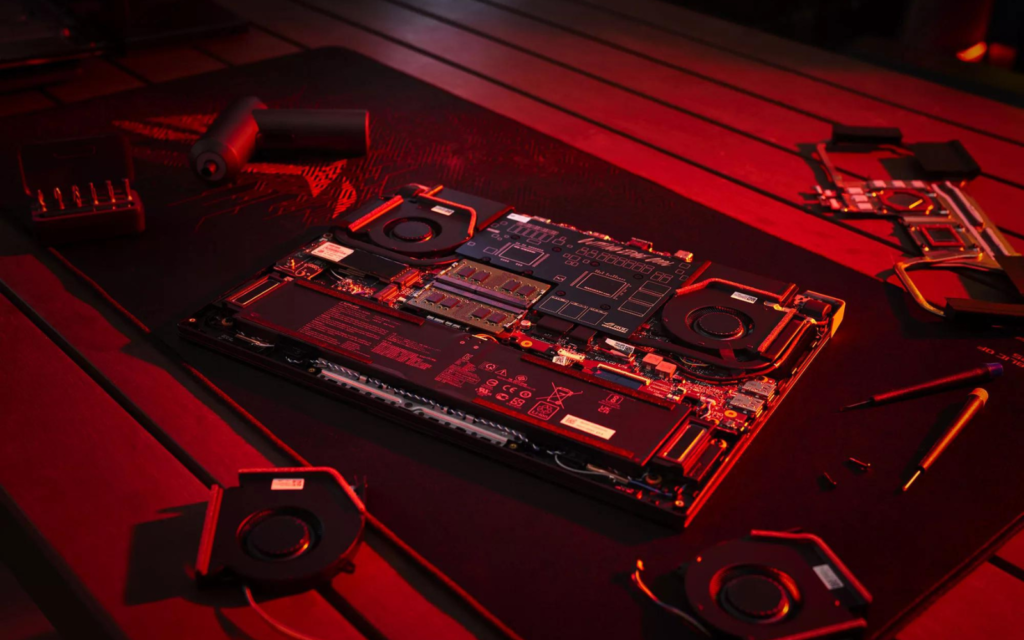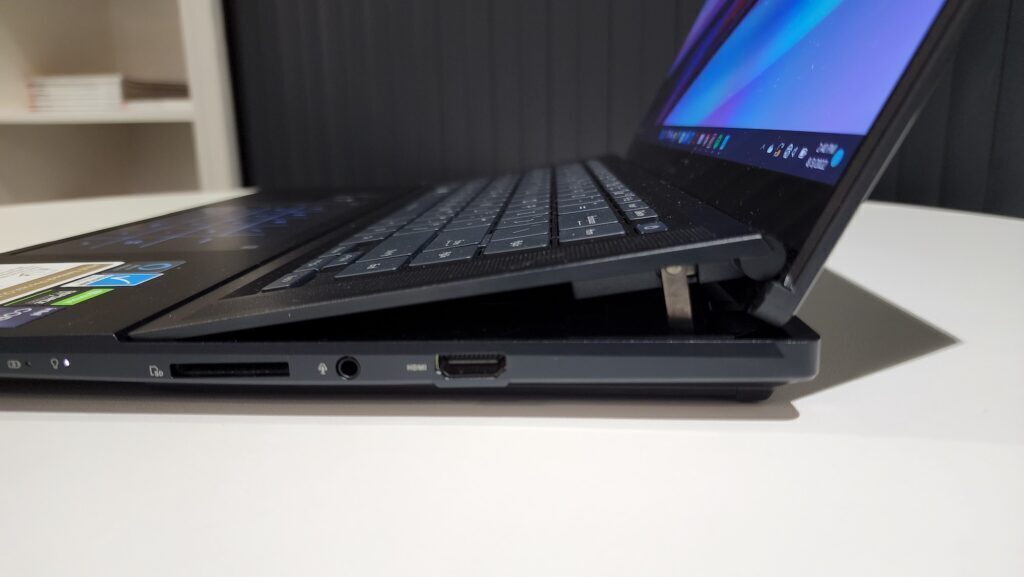Asus, in partnership with Intel, recently hosted its Performance Day event to highlight a few points it thinks everyone should know about. As is usually the case with these kinds of events, Asus took the first 15 minutes to tell everyone how well it did during the preceding years and how it continues to do well this year.
Stats like the 68% global OLED market share Asus held in 2021 and the impressive 94% OLED market share it currently holds in South Africa, were met with raised eyebrows and boisterous applause. But we can’t say we were surprised. There isn’t much competition in SA from other laptop manufacturers on the OLED front. So it’s a win by no contest for Asus.
There’s no ‘H’ in ‘performance’
Asus also highlighted its use of Intel’s 12th-gen H-series processors and the performance they provide in its high-end devices like the ROG Strix Scar 17 SE or the Zenbook Pro 16X OLED. Although Asus and Intel have partnered up, that doesn’t mean the parts Intel supplies are exclusive to Asus. Intel supplies the same parts to all vendors. How those vendors implement the parts is what separates them and their products.
The performance-focused devices powered by Intel’s H-series chips need to find a balance between providing enough wattage to the chips so they perform as expected and dealing with the resulting heat and noise by managing the noise-to-performance ratio of the fans. This is where the top-end laptops with similar specs differ between manufacturers.
Asus finds this balance in several ways. The one you’re most likely to notice is what Asus calls its Active Aerodynamic System (AAS) as seen on the Zenbook Pro 16X OLED.
Much like with its dual-monitor laptops, Asus has implemented a hinged design to raise the keyboard of the Zenbook Pro 16X. This allows for a 30% increase in airflow, according to Asus’ in-house testing. More cool air flowing over the internals is a good thing. Not just for your personal bits underneath the laptop or your palms resting on top but also for the hot bits inside. The cooler you can get them, the better they will perform.
It’s not Only fans
Additionally, Asus has also improved its internal heat pipes and fans. If you want the coldest laptop then you’re looking for the one with the biggest heat pipes. Having more than one also helps. Heat pipes connect the heat-producing components of a laptop with the fans. One end lies on the hot bit and the other end lies in front of a fan. You get the idea.
Asus uses two heat pipes in its standard config with two fan outlets for better heat dissipation. You’ll also find cranking up the fans to full speed helps with cooling. If you aren’t subject to noise constraints or you’ve got headphones then that might work. But most of the time, you’re going to want to avoid that so you can hear anything else.
Asus has improved both the fan motors and the blades of the fans to move air out of the chassis. The motors can go faster and the blades are thinner and more numerous, meaning the fans can move more air without needing to run at 100%. You can however still crank them all the way up if you want the most performance possible.
Not that kind of vapour
When you’re dealing with the highest-specced machines from Asus, like the ROG Strix Scar 17 SE that has a 175W power budget to play with, you’re going to need more than just fans and pipes to keep temperatures down. That’s where Asus’ vapour chamber tech steps in.
If that sounds foreign to you, here’s a quick explainer video of how they work exactly.
If you don’t have 4:46 minutes to spare, here’s the tl;dr.
A vapour chamber is a vacuum-sealed flat metal structure that contains a liquid that turns to gas when heat is applied. Then, when the gas reaches a point in the chamber that is colder than its billing point, it condenses and the process starts again.
The benefits of using a vapour chamber over traditional heat pipes include increased efficiency in heat dissipation and they can be made big enough to cover both the CPU and GPU. They are also a lot thinner than heat pipes which means the laptop doesn’t need to be bulky.
But there’s a catch. Vapour chambers are usually a lot more expensive to manufacture than heat pipes, so Asus only uses them in high-end laptops that will benefit the most, like the Strix Scar SE and Zenbook Pro 16X.
So, congrats to Asus for a not totally-pointless Performance Day event and for managing to build decent laptops that squeeze the most out of Intel’s H-series processors. We’re keen to see what the company cooks up next.




